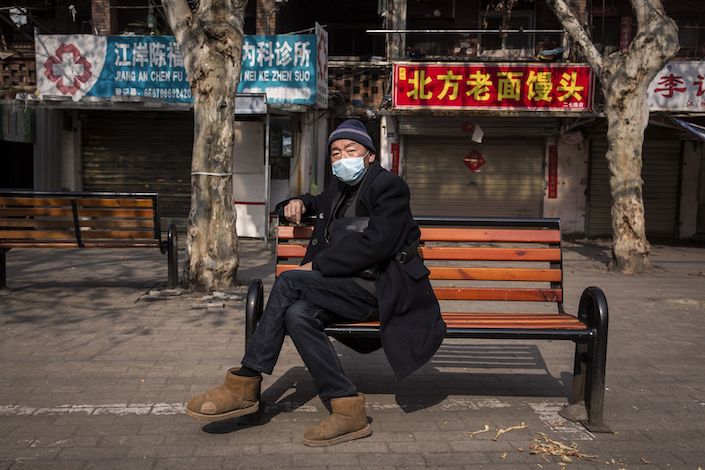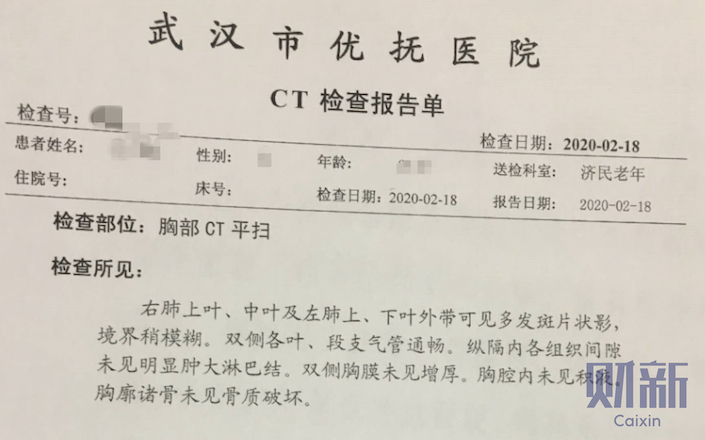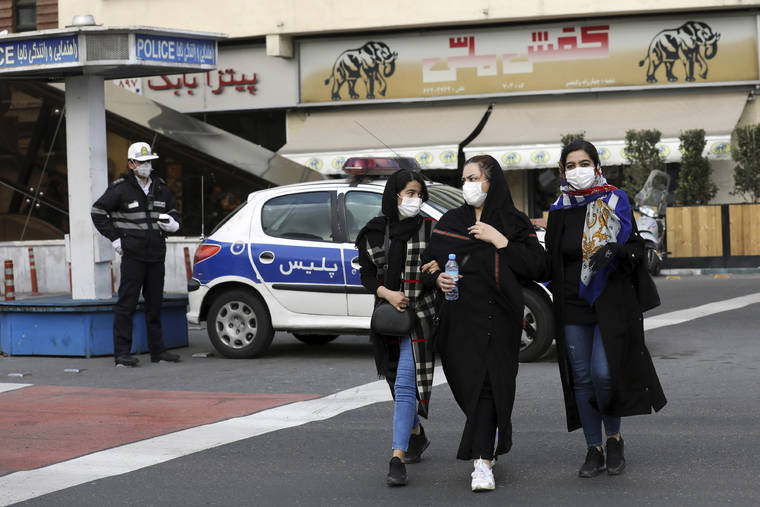‘Recipe for a Massive Viral Outbreak’: Iran emerges as a worldwide coronavirus threat
‘Recipe for a Massive Viral Outbreak’: Iran emerges as a worldwide coronavirus threat
- By David D. Kirkpatrick, Farnaz Fassihi and Mujib Mashal New York Times
- Today
- Updated 6:52 pm
-
ASSOCIATED PRESS
A policeman and pedestrians wear masks to help guard against the coronavirus in Tehran, Iran, on Sunday.
Religious pilgrims, migrant workers, businessmen, soldiers and clerics all flow constantly across Iran’s frontiers, often crossing into countries with few border controls, weak and ineffective governments and fragile health systems.
Now, as it struggles to contain the spread of the coronavirus, Iran is also emerging as the second focal point after China for the spread of the disease. C
ases in Iraq, Afghanistan, Bahrain, Kuwait, Oman, Lebanon, the United Arab Emirates — even one in Canada — have all been traced to Iran, sending tremors of fear rippling out from Kabul to Beirut.
The Middle East is in many ways the perfect place to spawn a pandemic, experts say, with the constant circulation of both Muslim pilgrims and itinerant workers who might carry the virus. Iran’s economy has been strangled by sanctions, its people have lost trust in their government and its leaders are isolated from much of the world, providing little clarity about the extent of the epidemic.
Civil wars or years of unrest have shattered the health systems of several neighboring countries, like Syria, Iraq, Afghanistan and Yemen. And most of the region is governed largely by authoritarians with poor track records at providing public transparency, accountability and health services.
“It is a recipe for a massive viral outbreak,” said Peter Piot, director of the London School of Hygiene and Tropical Medicine and the former founding executive director of the Joint United Nations Program on HIV/AIDS.
Millions of Muslim pilgrims travel each year from around the region to visit Shiite holy sites in Iran and Iraq. In January alone, 30,000 people returned to Afghanistan from Iran, and hundreds of others continue to make the pilgrimage to Qom, the site of the outbreak, every week, Afghan officials say.
Iraq closed its border with Iran on Saturday, but millions cross it every year. So scores of infected people could potentially have brought the virus to Iraq, depending on how long it has been present in Iran. And as of midday Monday in Najaf, flights to and from Iran were still taking off and landing.
Al Jubori, the head of the Iraqi Parliament’s Health and Environment Committee, called the coronavirus “a plague” and said his committee was demanding a far more complete closure of all borders with Iran. “Land, sea and air until the disease is completely controlled.”
Iran’s health ministry sent a letter to the governor of Qom on Thursday and asked Shiite religious leaders to limit the number of pilgrims at the Shrine to Fatima Masumeh and other religious sites in the city, but as of early Tuesday, throngs of people still gathered around the shrine, touching it and taking part in communal prayers.
Iran is in many ways a case study in the risks of the disease spreading. The country reported its first case of the coronavirus less than a week ago, in Qom. On Monday health officials reported that four people had died there in the last day, bringing the total to 12. At least 61 others had been infected in Iran, the officials said, with new cases being reported in Isfahan, Hamedan and other cities, as well as in Qom.
Now the slow drip of news about the spread of the virus is compounding Tehran’s already acute credibility problems, less than two months after officials were forced to admit lying about their knowledge of the accidental downing of a Ukrainian passenger jet by air defense systems. Many Iranians on Monday were openly skeptical about the official accounts of the spread of the virus.
A member of Parliament representing Qom claimed on Monday that at least 50 people had already died there, including 34 in quarantine, and that the first case had been reported more than two weeks before officials acknowledged any infections.
“Every day 10 people are dying in Qom,” the lawmaker, Ahmad Amiri Farahani, asserted in a speech to Parliament, demanding a quarantine on his city.
Health Ministry officials vehemently disputed his claims. “I will resign if the numbers are even half or a quarter of this,” said Ahmad Harirchi, adviser to the health minister.
Adding to the public anxiety, the Iranian news media reported that Dr. Mohamad Reza Ghadir, the head of a medical university in Qom and the top official in charge of managing the outbreak there, was among those placed in quarantine.
On Monday, Ghadir said on Iran’s state television network that the Health Ministry had ordered city officials “not to publish any statistics” related to the outbreak in Qom. The situation there was “very dire and disease has spread across the city, ” he said.
Iranians, distrusting the authorities, were ignoring official urgings to stay away from hospitals for fear of spreading the disease, instead crowding into emergency rooms to be tested. Imam Khomeini Hospital in Tehran put up a triage tent outside to handle the overflow.
In an interview with BBC Persian from Tehran, Dr. Babak Gharaye Moghadam urged citizens to “please, please listen” to the advice of health officials and not to turn to social media feeds on their cellphones for guidance.
The price of hospital masks was spiking across the region, including in Iran, Iraq, Lebanon and Afghanistan, where some were selling for as much as 30 times the usual cost.
Experts worry that few Middle Eastern countries are ready to respond effectively to the threat posed by the virus.
“How ready are these countries?” asked Dr. Montaser Bilbisi, an American-trained infectious disease specialist practicing in Amman, Jordan. “In all honesty, I have not seen the level of readiness that I have seen in China or elsewhere, and even some of the personal protective equipment is lacking.”
In Jordan, for example, he said that he had not yet seen a fully protective hazardous materials suit. “So health care workers would be at very high risk for infection.”
In Afghanistan, officials said the first confirmed case of the virus was a 35-year old man from the western province of Herat who had recently traveled to Qom.
Health officials declared a state of emergency in Herat. The government on Sunday had already suspended all air and ground travel to and from Iran.
But the border is difficult to seal.
Thousands cross every week for religious pilgrimages, trade, jobs and study — about 30,000 in January alone, the International Organization of Migration, an intergovernmental agency, reported.
“In the past two weeks, more than 1,000 people have visited or traveled to Qom from Herat, which means they come into closer contact with the virus,” the Afghan health minister, Ferozuddin Feroz, said Monday at a news conference in Kabul.
As officials offered reassurances that they were ordering more hospital masks, residents were panicking about what other precautions to take.
The son of a professor at a university in Herat, who returned three days ago from Iran, called a reporter for The New York Times on Monday asking what the procedure for quarantine was.
“My father doesn’t show any signs of corona, but he and our family are worried,” the son, Mohamad Iman, said. “He’s locked himself up in a room where he just reads books. He has asked us to leave him some food and water at the door, but to stay away.”
Saudi Arabia was the epicenter of a similar outbreak seven years ago, known as Middle East respiratory syndrome, or MERS, that was transmitted from camels to humans.
But even after seven years, Saudi Arabia, one of the richest countries in the world, has struggled to adapt state-of-the-art hygiene procedures to limit the spread of the virus within hospitals. A MERS outbreak last spring infected at least 61 people, killing eight of them.
“Many hospitals in Saudi Arabia have improved but some could still do better at prevention,” said Dr. David L. Heymann, former chairman of Britain’s Health Protection Agency.
In Iraq, the country with the most extensive border with Iran, only one case has been detected so far: that of a 22-year old Iranian religious student in Najaf, Suhail Mohammad Ali.
In the first comprehensive steps to combat the spread of the virus, the education department in Najaf on Monday postponed spring exams and the sacred Imam Ali Shrine was closed.
The central government’s Health Department recommended avoiding crowded places, kissing or shaking hands.
In Lebanon, a 41-year-old woman who had traveled to Qom on a religious pilgrimage landed in Beirut on Thursday night and was found Friday to have the virus. It was not until Monday, though, that the government issued an emergency plan, suggesting that travel to the affected areas be restricted and that arriving passengers be isolated at the airport if they showed symptoms.
But no definite restrictions were ordered; not all passengers landing in Beirut in recent days have been screened; and another two planes from Qom were allowed to land in Beirut on Monday. Passengers on the plane carrying the infected Lebanese woman from Qom were told to quarantine themselves at home.
The country’s health minister, Dr. Hamad Hasan, on Monday urged the Lebanese to stay calm. But Rabih Shaer, founder of a Lebanese nonprofit that campaigns against corruption, called the government’s sluggish response “irresponsible and criminal.”
“Already the Lebanese population lost trust that this political class can face all the problems,” he said. “And now, until today, they still haven’t taken the right measures. There’s no transparency, there’s no accountability.”
Dr. Nada Melhem, a virologist at the American University of Beirut who has been consulting with the Health Ministry, acknowledged that, “the level of panic in Lebanon is really high.”
“But with systematic follow-up, we will be able to contain it,” she added. “Are we going to have some gaps? We will definitely have some, but I hope we can limit them as much as we can.”




















:max_bytes(150000):strip_icc()/GettyImages-914458524-5b918803c9e77c0082597655.jpg)
